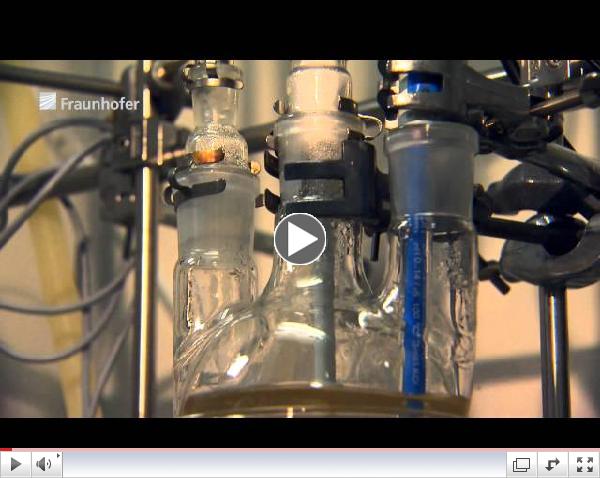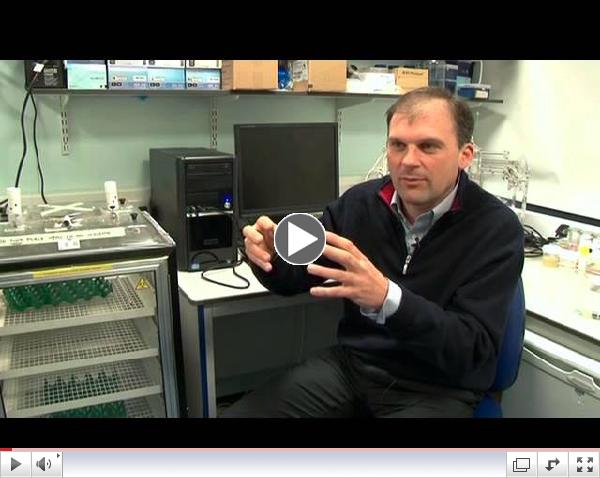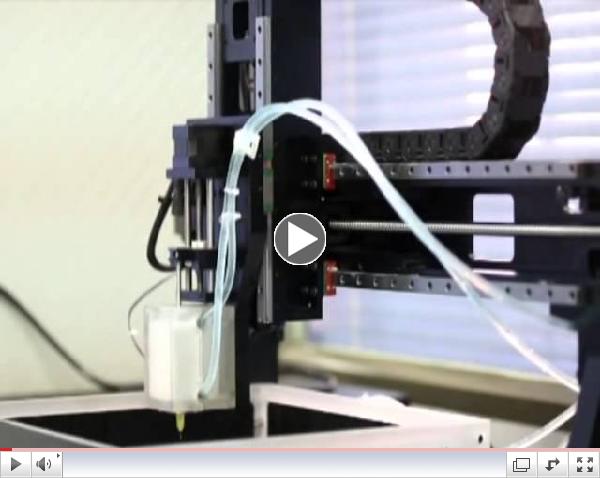|
|
To download or read a pdf version of this newsletter, click here: February 2014 |
|
|
|
|
 BioMarketing Insight BioMarketing Insight
Newsletter
Creating Markets and Marketing Strategies
|
|
|
|
| |
Welcome to BioMarketing Insight's monthly newsletter.
We all have heard how 3D printing could revolutionize manufacturing in being able to print customized products on-demand for consumers. It has also influenced and advanced a number of areas in medicine. This month I will be discussing "How 3D Printing has Influenced and Advance Regenerative Medicine and Beyond."
Read on to learn more about this topic and other current news. On the right are quick links to the topics covered in this month's newsletter. The next newsletter will be published on March 17th.
We encourage you to share this newsletter with your colleagues by using the social media icons at the top left, or by simply forwarding the newsletter via email.
Please email me, Regina Au, if you have any questions, comments, or suggestions.
Sincerely,
Regina Au
Principal, Strategic Marketing Consultant
BioMarketing Insight
|
|
 |
Join Our Mailing List - For Mobile
| |
|
| BioMarketing Insight Services |
|
|
|
Save the Date: April 28th - 29th, 2014 - Medical Informatics World Conference
| |

The healthcare industry particularly those classified as Accountable Care Organizations' (ACOs) goal is to deliver quality health care and reduce healthcare cost. This goal is believed to be achieved through the coordinated efforts of all stakeholders: providers, payers, patients and pharma by way of electronic medical records to analyze and stratify patients into various risk management groups. Then tailor information and programs specific to these groups in providing quality care which will result in decreasing future healthcare cost. This meeting will focus on innovative solutions that include biomedical sciences, health informatics, and IT.
I will be chairing the session on "Patients and Consumers Managing Their Own Data," on Monday, April 28th at 1:55 pm under the Coordinated Patient Care, Engagement and Empowerment Program track. Program to engage patients to be more proactive in their healthcare include remote healthcare monitoring for early detection, healthcare portal for patients to access their medical records and information via automated communication and feedback to specific disease customized for patient involvement.
Click here for more details. For full information on the conference, click here. Top
|
|
Regenerative Medicine: Where We Are Today
| |

For a number of years now, scientists have conducted research in the field of regenerative medicine and what they've discovered is very intriguing. They've learned, for example, that certain animals regenerate some parts of their bodies. There are lizards that can grow back a severed tail. Planarians and sea cucumbers, when cut into two, can each grow into a new worm. Sharks can grow new teeth and replace what was lost and starfish can give themselves a new arm.
I attended the October 5th, 2013 Whitehead Institute Symposium held in Cambridge, MA where Peter Reddien, Howard Hughes Medical Reward Investigator at the Massachusetts Institute of Technology, talked about "The Science of Regeneration," and addressed the question of why some animals can regenerate and others can't.
What Reddien and his research group discovered was that adult planarians have pluripotent stem cells. These cells can make ALL the cell types of the animal's body, which is why the planarian can regenerate itself. Frogs and salamanders, however, have tissue-specific stem cells to regenerate a frog's tail or a salamander's limb
So why is it that some animals have pluripotent stems cells and others have tissue-specific stem cells? Could it be the evolution of a higher being, which is why pluripotent cells only exist as embryonic cells? Reddien said the challenge to answering that question is our lack of a suitable experimental approach, that we need new molecular approaches. He went on to say that the current genetic model system used, such as the mouse, fruit fly, and round worm, are great models when seeking to uncover and understand basic biology, but none of these animals regenerate and it is those creatures that we need to study. Reddien also said that we need animals that are able to regenerate robustly and quickly and are easy to grow in the lab. Planarians are a classic regeneration model in sequencing their genomes and studying the role of RNA interference (RNAi) in regeneration. We must develop methods to study both cellular and molecular mechanisms. Just recently, we may have entered into "a new era" of stem cell research as reported in the January 2014 issue of Nature where stems cells could be converted to pluripotent cells with a simple methodology of a low pH bath. Haruko Obokata, a stem cell biologist from RIKEN Center for Developmental Biology in Kobe, Japan and now with Brigham and Women's Hospital found a way to turn stems cells into pluripotent cells through external stressors. Obokata first discovered this when she "squeezed (cultures cells) through a capillary tube, (they) would shrink to a size similar to that of stem cells. Five years later she discovered "three stressors - a bacterial toxin that perforates the cell membrane, exposure to low pH and physical squeezing - each were able to coax the cells to show markers of pluripotency." Obokata calls this conversion of T cells to pluripotent cells "stimulus-triggered acquisition of pluripotency (STAP)." "The findings are important to understand nuclear reprogramming," says Shinya Yamanaka, who pioneered iPS cell research. "From a practical point of view toward clinical applications, I see this as a new approach to generate iPS-like cells." As with any novel scientific research, this is creating a lot of buzz and controversy. Robin Lovell-Badge, a stem cell expert at Britain's National Institute for Medical Research believes it will take a while to fully understand the mechanism and capabilities of the STAP cells and how this translates to medicine. "But the really intriguing thing to discover will be the mechanism underlying how a low pH shock triggers reprogramming," Lovell-Badge said. "And why does it not happen when we eat lemon or vinegar, or drink cola?" Other theories "Regeneration can (also) work by causing differentiated cells that had stopped dividing to 'go back' to dividing and multiplying in order to replace the lost tissue." Research has shown this phenomenon with regeneration of Zebrafish's heart. The heart muscle cell called the cardiomyocyte divides to replenish missing cardiac tissue. This is why the Zebrafish has become a powerful organism model. This phenomenon was also shown with newly born mouse heart, but this property is lost as mice mature. Human beings, like mice, also lose this property as cells mature. Researchers at the J. David Gladstone Institutes, affiliates of the University of California, San Francisco, were successful in injecting three genes inside the damaged region of a mouse heart and within a month, non-beating cells that normally form scar tissue had converted into beating heart muscle cells. "We're not necessarily using stem cells, but we're taking advantage of controlling the fate of cells and reprogramming them into whatever we want," said Dr. Deepak Srivastava, director of the Gladstone Institute of Cardiovascular Disease. The new technique uses three genes called Gata4, Mef2c, and Tbx5, known to play a role in forming and developing the heart was successful in lab mice, Srivastava said. Top |
|
3D Printing and Regenerative Medicine Research
| |
The most advanced progress scientists have made with regeneration and somewhat man-made regeneration is with 3D printing technology. Scientists using stem cells and/or various forms of scaffolding have taken advantage of these technologies in such a short period of time and many different human parts have been reproduced: skin, ears, nose, eyes, bone, parts of a skull patch and blood vessels.
Some of these advances are driven by those who thought 3D printers would be used in every household and when that didn't materialize as anticipated due to cost, people looked for other opportunities and medicine was a gold mine. Using 3D printing for medicine is more complex as I will describe below, but our brilliant researchers will figure it out.
The idea of making human parts as mentioned above is not new. One may think of the film industry special effects or prosthetics, but production is labor-intensive, often taking months to manufacture. Now with 3D printing, one can make 150 eyes in an hour and details such as size and iris color can be easily customized. Substitute ink with human stem cells and one can print skin for burn victims, or even human cartilage. Scientists and companies from all over the world are racing to develop 3D printed products for uses in medicine.
Scientists at the Wake Forest Institute for Regenerative Medicine in the US have created a hybrid 3D printer that can create implantable human cartilage. We all know how hard it is to regenerate cartilage but "once the fake cartilage is implanted, it can form a porous structure that encourages healthy, natural cartilage to grow around it."
TeVido BioDevices LLC, a start-up company in Texas, is using 3D printing technology to develop a process to fabricate women's breast tissue using the patient's fat cells and predicts to have a lower rejection rates. However, TeVido still has many challenges before this goes to market. "Keeping the shape intact, determining the ideal density of capillaries to maintain blood flow to all the cells, and preventing cells from dying before implantation are all key concerns that the company is exploring."
 | | Blood vessels from an Inkjet Printer |
Printing blood vessels is harder, because one needs to create a functioning circulatory system to go with it stated Gunter Tovar, a German scientist who heads up the Fraunhofer Institute for Interfacial Engineering and Biotechnology. He points out that "the lining is important to make sure that the components of the blood do not stick, but are transported onwards." The printed vessel has to work just like a normal vessel in directing nutrients to their destination. Tovar, lead investigator for the 3D-printed blood vessels project called BioRap, is developing blood vessels with a mix of synthetic polymers and biomolecules.
 | | Biology Builders exhibit at the Royal Society Summer Science Exhibition 2013 |
Printing organs is harder still, because of their more complex architecture. There are two main reasons for this: 1) There are no adult human stem cells available for the heart or nerves of the spinal cord, so embryonic or induced pluripotent stem cells must be used, according to Kevin Shakesheff from University of Nottingham in the video above; and 2) because organs come in different sizes, it is necessary to guarantee that the cells are in the right position. The ultimate goal is to use these blood vessels for procedures such as bypass surgery.
 | | Living kidneys printed out in E China |
Professor Xu Mingen from Hangzhou Normal University: School of Medicine in Zhejiang Province, China has been able to print a 3D living kidney. Prof. Xu explains that they use stem cells and a hydrogel mixture, because the hydrogel is rich in water and nutrients and the cells which have blood vessels need tissue space to grow. The 3D kidney can function like a human kidney in terms of breaking down toxins and metabolites and can live for up to 4 hours. The ultimate goal is to use the 3D printed kidneys for organ transplant, with a decreased chance of organ rejection. But there are still many years of research ahead before this will be realized.
|
3D Printing and Other Uses in Medicine
| |
Other companies exploring uses for 3D printing in medicine include Organovo in San Diego, CA where scientists for the very first time have been able to print a tiny 3D replica of a human liver. The mini liver is a half millimeter deep and four millimeters across and can perform most of the same functions as a human version. The company's immediate goal is to test how the liver reacts to certain drugs for future toxicity screening tests and study disease progression and ultimately, for organ transplant.
Surgeons from a number of different subspecialties are taking advantage of organs created by way of 3D printing into their practices. Mark Ginsberg, an Iowa jewelry store owner and manufacturer, has partnered with surgeons to build organs such as a heart, from CT scans. "This way, they can hold the actual heart in their hand, the physiology of that heart, the rendering of that heart, and pregame the direction of the tools, the angle of the tools and how they're going to attack different vessels," Ginsberg said.
Doctors at Children's Hospital of Philadelphia are also taking advantage of 3D printing. In collaboration with cardiologists Yoav Dori and Mark Fogel and cardiac surgeons, they are printing replicas of children's heart to plan and practice complex surgical procedures. Congenital heart defects, the most common type of birth defect in the United States can be complicated and diverse, and can range in severity from a small hole between chambers to the absence of entire chambers. Being able to plan and practice surgery with 3D models can make the procedures faster resulting in better outcomes.
"The malformations that we deal with are incredibly complex," said Dori. "That's the world of pediatric cardiology."
At Newcastle Upon Tyne Hospitals NHS Trust in the UK, Craig Gerrand, a consultant orthopedic surgeon used the hospital's 3-D printer to fabricate a replacement pelvis out of titanium powder fused together with a laser, The Telegraph reports.
The patient had a rare form of bone cancer where most of the bone had to be removed and prevented the surgeon from attaching an implant. The titanium pelvis is coated with a mineral onto which new bone can grow and the pelvis was implanted using a standard hip replacement.

Digital Dentistry, scanning the mouth to map the making of dentures, bridges, crowns and other orthodontic devices is yet another possible use for 3D printing. Common dental procedures would become much less invasive, more accurate and the practice of making physical molds of a patient's mouth would become obsolete. 3D printing could revolutionize dental care, making it less expensive, more efficient, and more comfortable for patients. With a little creativity, the possible uses of 3D printing technology are endless.
Top
|
Closing Thoughts
| |

While we sometimes joke about futuristic movies such as Star Trek, advances in technology have come a long way. Nevertheless, we still have a way to go before we can create a fully functional organ from 3D printing, where rejection rates are low, and the organ functions for an extended period of time and, for pediatric use, the organs can grow larger.
We could not have come this far today if it were not for advances in technology and also incorporating technologies from other disciplines, such as high tech, semiconductor, biofabrication and others. These technological advances also apply to instrumentation for genome sequencing and high through put screening to help us further understand regeneration.
From this vantage point it appears that the sky is the limit as to what we can do in medicine with the help of 3D printing, The ability to regenerate an arm or leg may be far into the future, but for now we are grateful for the significant advances in robotics and prosthesis that have resulted in the development of artificial limbs that gracefully mimic human movement.
Combine the theories of robotics and substitute the metal parts with biofabrication or bioprinting of bone, cartilage, blood vessels and the help of a tiny microchip, we may one day be able to print a fully functional arm or leg, or help grow the necessary part to attach a 3D printed arm or leg.
Might we solve the mystery of regeneration for humans within a generation of two? It's hard to tell, but I'm optimistic since scientists have already discovered how to convert stems cells to pluripotent cells. Until then, we are certain to have a few good alternatives.
Top
|
|
|
|
About BioMarketing Insight
We help companies de-risk their product development process by conducting the business due diligence to ensure that it is the right product for the right market and the market opportunity for the product meets the business goals of the company. We can then develop marketing strategies to drive adoption for the product.
Top
|
|
|
|
|
|